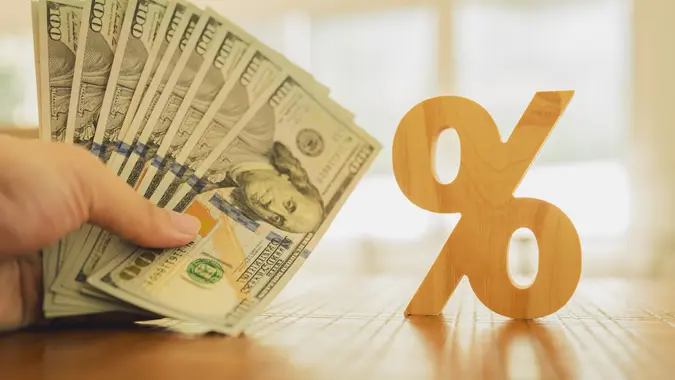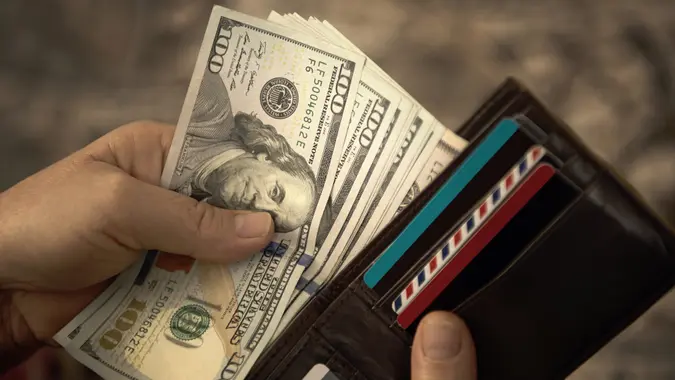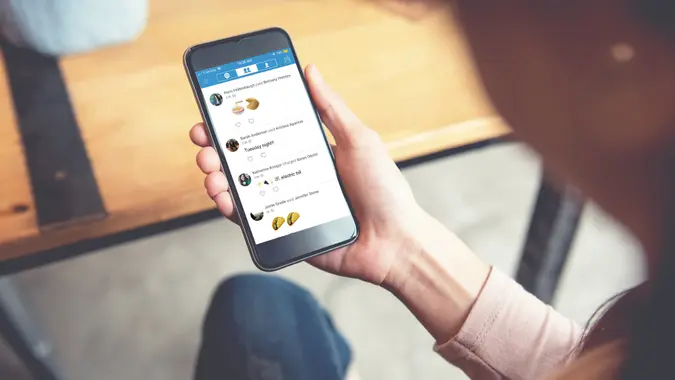5 Key Ways Your Bank Can Help You Set and Achieve Your Savings Goals Faster

Commitment to Our Readers
GOBankingRates' editorial team is committed to bringing you unbiased reviews and information. We use data-driven methodologies to evaluate financial products and services - our reviews and ratings are not influenced by advertisers. You can read more about our editorial guidelines and our products and services review methodology.

20 Years
Helping You Live Richer

Reviewed
by Experts

Trusted by
Millions of Readers
Inflation is eating away at the purchasing power of many Americans. With the high cost of living and increasing interest rates, it feels almost impossible to have some money left to stash away. Saving money can feel so hard in this economy, but there are several ways your bank can help you set and achieve your savings goal faster.
Automated Transfers
One of the simplest yet most effective ways your bank can help you save money faster is through automated transfers. This feature lets you set recurring transfers from your checking account to your savings account at regular intervals, be it biweekly or monthly. When you automate your savings, you remove the temptation of spending all the money. Plus, it builds consistency, ensuring that you save a set amount of money regularly, no matter what.
Many banks allow you to customize your transfers based on your financial goals. For example, if you want to save money for a vacation or a high-ticket item you’ve been wanting to purchase, you can set up a dedicated savings account for each goal and direct a small percentage of your paycheck toward them.
High-Yield Savings Account
A high-yield savings account (HYSA) is another tool banks offer to help customers reach their saving goals faster. Unlike traditional savings accounts, HYSAs offer higher annual percentage yields (APY).
Most traditional savings accounts offer APYs of around 0.40%, while HYSAs provide APYs for up to 5%, depending on the financial institution. While the difference may seem small, a HYSA can put more money into your pocket over time. If you have your money in a standard savings account, ask your bank if they offer HYSA and move your funds there. This way, you can grow your idle cash faster.
Savings Buckets or Sub-Accounts
It can be challenging to manage your finances in one savings account, especially if you have multiple goals. Savings buckets or sub-accounts let you organize various savings goals in one account, making it easy to track your financial goals.
Whether you’re building an emergency fund, saving for a vacation or saving for a down payment on a home, these sub-accounts make it easier to stay on track. This way, you know how much progress you’re making in each of your savings goals. Some banks even allow you to set individual targets and deadlines and automate transfers.
Bonus Offers
Many banks offer sign-up bonuses ranging from $100 to $500 or more for opening a new savings or checking account, provided that you meet specific requirements. These bonus incentives will give you the financial boost you need to reach your savings goals.
However, make sure you read the fine print of the terms before you jump into these offers. Some financial institutions may require you to keep the money in the account for a specific period or maintain a certain minimum balance to avoid fees. But if you’re planning to save already, taking advantage of these bonus offers is an easy way to earn free money and jumpstart your savings goal.
Cashback and Round-Up Savings Programs
Saving money doesn’t always mean cutting back. It could also mean earning money from what you spend. Several banks offer cashback rewards and round-up savings programs that’ll help you move one step closer to achieving your savings goal while making everyday purchases.
Banks offer anywhere between 1% to 5% cash back for purchases made at their partner retailers using a debit or credit card. You could also automatically round up your spare change to boost your savings. Leveraging these tools can help you reach your savings goals faster without changing your spending habits.
 Written by
Written by  Edited by
Edited by 

























